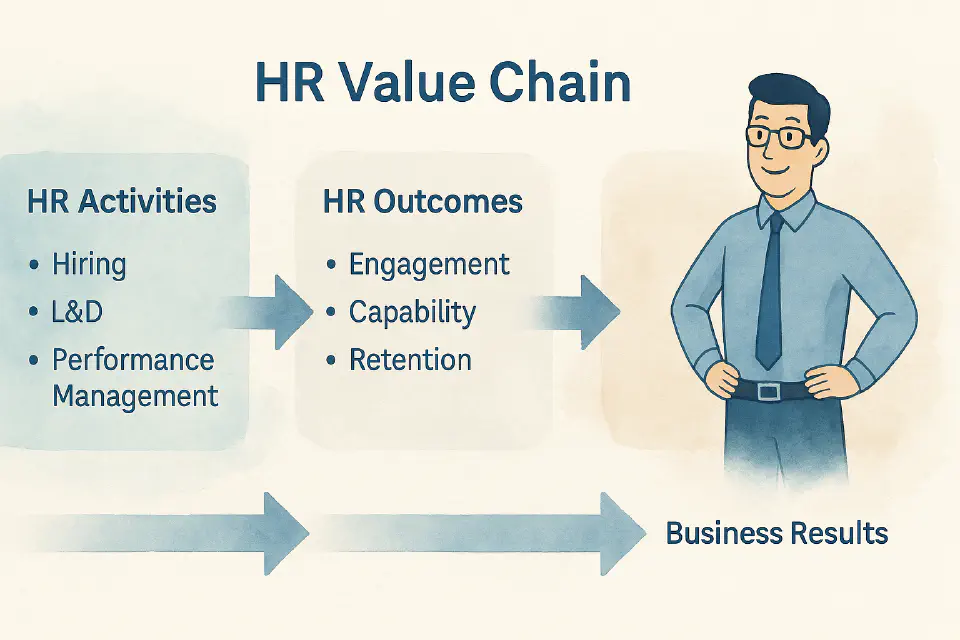
HR Value Chain: Linking People Practices to Business Results
If you can't trace HR practices to business outcomes, you're not doing strategic HR—you're doing administration.
The HR Value Chain helps you map how daily HR work connects to strategic outcomes. It’s more than a metaphor—it’s a practical framework for designing, evaluating, and communicating the impact of people practices.
The Logic of the HR Value Chain
The model has three main levels:
- HR Activities → What HR does
- HR Outcomes → What changes in the workforce
- Business Results → What improves in the business
Each level influences the next, and effective HR ensures strong links between them.
Breaking Down the Chain
| Level | Examples |
|---|---|
| HR Activities | Hiring, L&D, performance management |
| HR Outcomes | Engagement, capability, retention |
| Business Results | Productivity, customer satisfaction, ROI |
Why This Matters
HR often struggles to prove its value because it stops at activity tracking—how many people trained, how many positions filled. But strategy lives in impact, not in inputs.
Applying the Model
Let’s say you invest in manager training. To show value:
- Activity: 120 managers trained
- Outcome: +15% in team engagement scores
- Result: 8% increase in team productivity
The value chain gives you a storyline with data.
Building Stronger Links
To strengthen your HR value chain:
- Define success metrics at all three levels
- Build data systems that connect HR to business KPIs
- Collaborate with Finance and Ops on shared metrics
- Use dashboards that trace cause-and-effect, not just activity
Pitfalls to Avoid
- Assuming correlation equals causation
- Using vanity metrics (e.g., training hours) as proof of value
- Ignoring external influences (e.g., market shifts)
Evolving the Chain with Analytics
Advanced organizations use:
- People analytics to model causal pathways
- A/B testing for interventions
- Predictive analytics to forecast workforce outcomes
The goal is to move from retrospective reporting to strategic foresight.
Conclusion
The HR Value Chain turns good intentions into measurable impact. It helps HR leaders speak the language of business and earn their seat at the strategy table—not by shouting louder, but by showing results.
Up next: How can we push these results even further? Let’s explore Workforce Productivity and Value Creation.